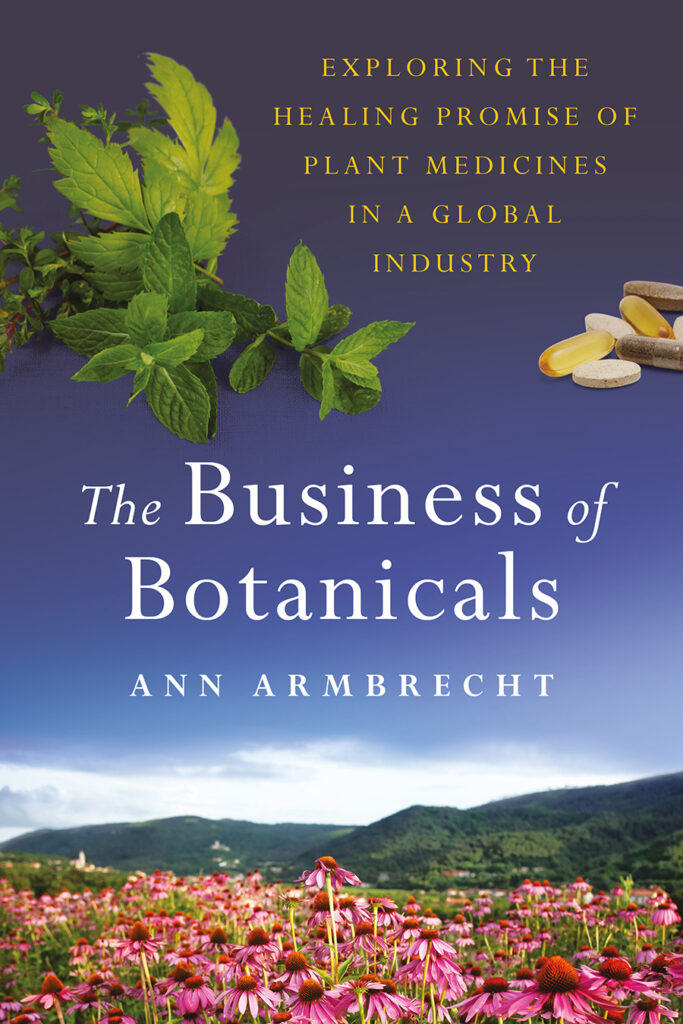Here in Maine, and much of New England, we are so lucky to have access to herbal companies that grow the plants for their herbal products — right on this land. But, maybe you have found yourself searching for bulk herbs you couldn’t find locally, purchasing them online and wondering where they come from. Or perhaps you’ve taken a supplement found at the local co-op and wondered the same. The “Business of Botanicals” by Ann Armbrecht follows the story of the plants and the people who tend, collect and process them around the world as part of the global herbal products industry and can help answer some of your questions.

“The Business of Botanicals:
Exploring the Healing Promise of Plant Medicines in a Global Industry”
By Ann Armbrecht
Chelsea Green Publishing, 2021
288 pages, hardcover, $24.95
The book starts off with the history of a well-known packaged tea company started by Rosemary Gladstar, Traditional Medicinals. Gladstar, widely known as a teacher in the western herbalism world, is not often thought of as a botanical business mogul but she also started Mountain Rose Herbs, The California School of Herbal Studies, an herb shop and more. Following her profile in the book there is a veritable who’s who of herbalists in the herbal products industry, many of which are also herbal teachers. The history of how these people grew these companies helps one understand that so many of the folks rooted in this work often didn’t set out to become figures in the global marketplace but instead sought to source medicine to support people’s healing when it wasn’t available locally. Dr. Tieraona Low Dog is quoted saying, “We can’t suggest in any way that just because you dance with plants you have a high level of integrity by default.” We are reminded that a critical lens is needed in investigating where these herbs come from even if the intentions of the companies’ owners may be to promote wellness and healing.
The truth is that the global trade of herbs and spices is rooted in colonialism. The book gives some detailed examples of how colonialism has destroyed the environment around the world in relation to the herb and spice trade. One example being the Dutch pulling out and killing nutmeg trees in areas they didn’t control and sterilizing the seeds so they would retain the market of this spice. Through Armbrecht’s travels and investigation she seeks to understand which companies are working to be less extractive in their acquiring of desired herbs and instead trying to be in reciprocal relationship with the plants, the land, and the people who they are doing business with.
It is shocking to hear of the piles of herbs left out on dusty streets or herbs being processed in a location that also serves to make sparklers. After being exposed to these aspects of the industry though, we can learn to make more informed choices about where our herbal teas, supplements and even ingredients for natural body-care products are coming from. This book is a necessary read for any herbal product maker who has ever sourced non-local ingredients and an informative read for anyone who purchases these products.
The research Armbrecht has done has also given rise to the Sustainable Herbs Program which includes an educational webinar series and extensive website. The website gives information about supply chains, profiles of some of the most popular herbs in international commerce and so much more. You can learn more and check it out at sustainableherbsprogram.org.
– Denise DeSpirito
